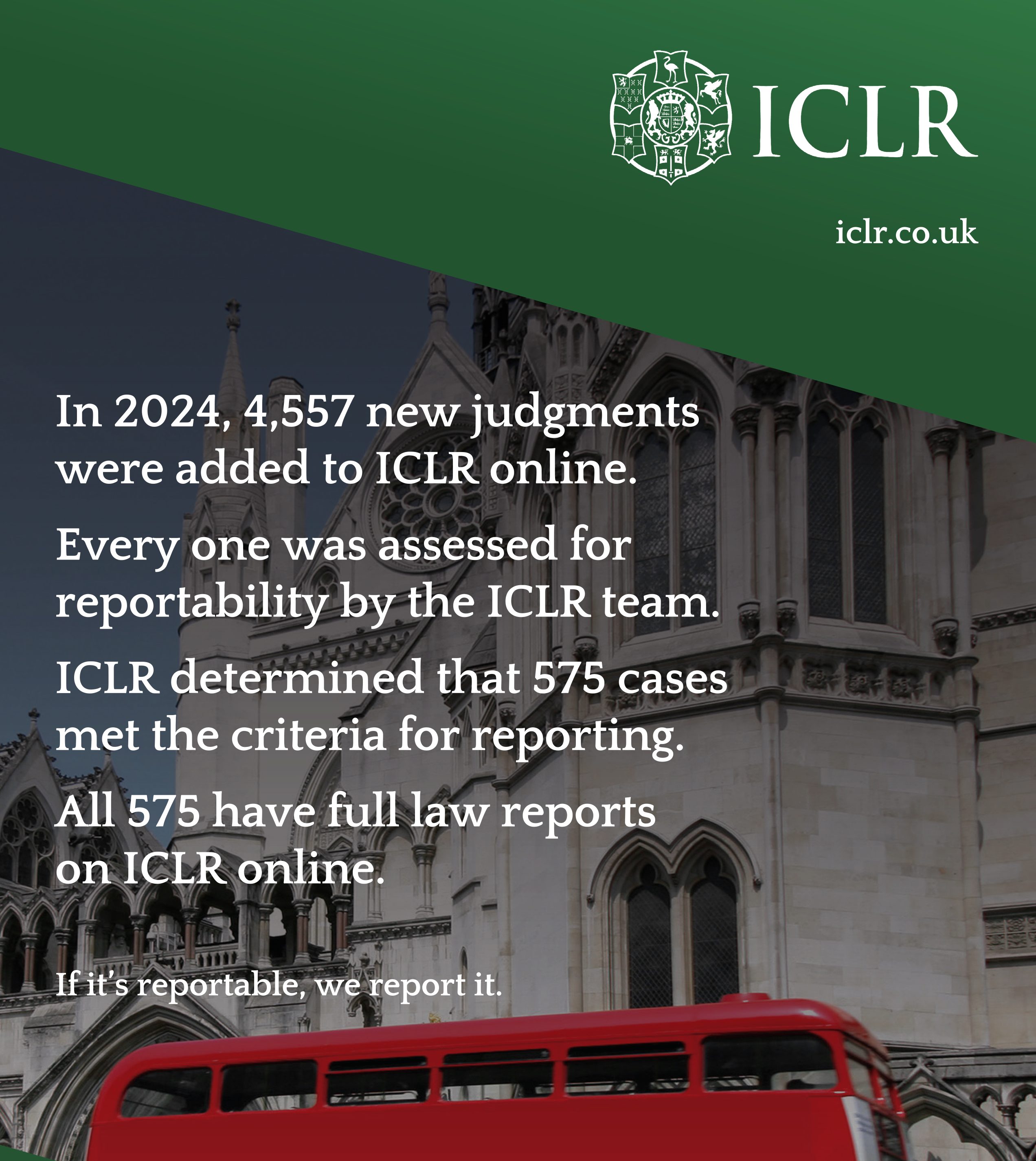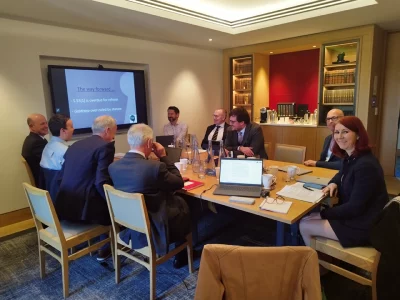
ICLR
If it's reportable, we report it.

1925 saw an ‘explosion’ of property legislation which aimed to ‘simplify’ and ‘make certain’ all transactions in land. The legislation also sought to reduce the number of estates in land and make transactions more affordable. Six bills received the Royal Assent on 9 April 1925 (many have been repealed or replaced):
The new Acts did not attempt to revolutionise the law relating to property but rather attempted to do what had never been done before: codify and consolidate large parts of the existing common law and statute in relation to property in land.
The pre-1925 law had developed from Tudor times and more radical changes were made in the 19th century. Influenced by political and social changes, the first report from the Real Property Commissioners in 1829 began a process of legislative change that the 1925 legislators concluded. 1925 was the ideal time, due to change following the First World War. Public opinion was in favour of reform because land was expensive to convey and too slow. Large estates were being broken up, people aspired to home ownership, death duties were heavy, conveyancing was defective, and the law of primogeniture needed review. Lord Wolstenholme and Sir Benjamin Cherry began the legislative process in 1895, and the legislation received Royal Assent on 9 April 1925.
Just over 100 years later (10 April), a group of scholars and barristers met for a celebratory centenary workshop and to contemplate its next 100 years. The group were welcomed by Professor Judith Bourne Legal Academic Bencher at The Inner Temple, CILEX Law School and workshop organiser).
The plenary paper was delivered by Professor James Lee (Legal Academic Bencher at The Inner Temple and King’s College, London). Professor Lee’s paper reflected on the use made of equity by the legislature. His paper, Equity, Ancient and Modern, examined an article by HG Hanbury in 1929, entitled The Field of Modern Equity, which had reflected on “the very important Property Legislation of 1925” and its effect on the ‘province of equity’ and the resulting implications for teaching and research on the subject. Professor Lee described this article as Hanbury’s “sales pitch” for the book that would become Modern Equity, the first edition of which was published in 1935. 99 years later the Supreme Court heard a submission that section 53(1)(c) on dispositions of equitable interests should in fact be limited to such interests in land, rather than all property (as at least 50 years of case law had confirmed or assumed).
Professor Lee concluded that the Law Commission has identified a future project on reform, modernising trust law for a global Britain. In proposing that project, the Commission referred to trusts as an “outdated area of the law”, which “has not been comprehensively reviewed since 1925.” And yet, reviewing legislative developments in the field of trusts over the last 30 years, both here and abroad, showed that equity retains its dynamic role. We therefore needed to re-evaluate our thinking, pedagogy and scholarship in this field, as modern equity becomes ancient.
The Gratuitous Transfer Resulting Trust: Personal but not Real? was the title of the next paper delivered by Dr Matthew Stubbins (Director of Law at Canterbury Christ Church University). His paper examined two questions: whether section 60(3) of the Law of Property Act 1925 was a reforming section or merely a “word-saving” provision, and further, what was the correct interpretation of s60(3) and the position of gratuitous transfers of land.
The paper set out how, for the last 100 years, debate has simmered over the intended purpose behind some of the Law of Property Act (LPA) 1925’s provisions. He argued that this was encapsulated in s60(3), where notwithstanding its now century’s long existence, a categorical interpretation had yet to be formulated, in contrast to other sections such as section 53. The uncertainty regarding section 60(3) could be distilled into those two questions: was the LPA 1925 intended to actively reform property law, or was it merely a “word-saving” provision intended to simplify the convoluted pre-existing legislation?
Section 60(3) provides that “In a voluntary conveyance a resulting trust for the grantor shall not be implied merely by reason that the property is not expressed to be conveyed for the use or benefit of the grantee.” The literal interpretation, adopted in court judgments such as Lohia v Lohia and Ali v Kahn [2002] EWCA Civ 874, and by many in the academic community, has been to interpret section 60(3) as eliminating the presumption of resulting trust upon the gratuitous transfer of land. He argued that the judicial trend against the established literal interpretation was problematic. The two questions therefore remain unanswered a century after the LPA’s enactment.
David Sheldon (Lecturer in Law, University of Bristol) opened the next paper by describing the enactment Law of Property Act as, “a blockbuster event in the world of property law” which built on the Law of Property Act 1922. Mr Sheldon’s paper, Formalities, the Law of Property Act 1925 and the 21st Century provoked much discussion in his assessment of the formality requirements in the Law of Property Act 1925 and their fitness for purpose in the modern world of registered land.

ICLR
If it's reportable, we report it.
Trusted law reporting since 1865
He argued that the LPA 1925 was an ambitious recrafting and reorganisation of property law as we knew it. Within this recrafting, an attempt was made to simplify the law of real property to create a system where conveyancing became more efficient. Part of this clarification was successful in that the number of estates and interests in land were reduced significantly as well as creating a small number of formalities needing to be satisfied for the effective creation or transfer of legal estates.
Over the course of the next 100 years, the simplification of these formality requirements as well as their workings alongside other provisions within the LPA 1925 have been strained and stretched to their limits. Technological developments, judicial intervention and judicial creationism along with the enactment of further statutes such as Law of Property(Miscellaneous Provisions) Act 1989, Trust of Land and Appointment of Trustees Act 1996 (ToLATA) and the Land Registration Act 2002 have raised questions as to whether the time has finally arrived for the Law of Property Act 1925 to be replaced with a new statute fit for modern purposes.
After coffee, Dr Anton van Dellen (barrister at Fraser Chambers, Assistant Coroner in West London, Rhodes Scholar, Fellow at Christ Church and former neurosurgery registrar) considered both the present and future of the 1925 Property legislation with his paper on Cryptocurrency and Law of Property Act 1925 section 53(1).
His paper considered the trading of cryptocurrency and the application of section 53(1) Law of Property Act 1925. Section 53(1) states that a disposition of an equitable interest in land must be in writing; the writing must be signed by the person disposing of the interest, or by their agent or by will; and a declaration of trust must be in writing, signed by the person who can declare the trust, or by will. Ruscoe & Moore v Cryptopia Limited (in liquidation) [2020] NZHC 728 held, for the New Zealand equivalent of section 53(1), that cryptocurrencies were held on express trusts. The servers on which the cryptocurrencies were held had been hacked. The cryptocurrencies held were not segregated and were consequently held on trust for multiple co-owners. Section 53(1) applies to dispositions of equitable interests in cryptocurrencies that are held on trust for multiple co-owners. However, the underlying issue is the certainty of subject matter in relation to the shares of an intangible asset. In Re Goldcorp Exchange Limited (in receivership) [1995] 1 AC 74, the Privy Council held that a proportion of a fluctuating stock of gold was insufficiently identifiable to constitute the subject-matter of a trust. Goldcorp was distinguished on the basis that it was a Sale of Goods case in Hunter v Moss [1994] 1 WLR 452 which concerned a share of future shares and by Neuberger J (as he then was) in Re Harvard Securities Ltd [1998] BCC 567. Section 53(1), he felt, was overdue for reform as applicable to cryptocurrencies, which would enable Goldcorp to be over-ruled by statute.
Dr Sarah Egan (barrister of The Inner Temple, New Square Chambers) considered Co-ownership and Cohabitation after 1925: A Case for Reform? Her paper reviewed whether the 1925 legislation accomplished its objectives regarding co-ownership of property with a focus on cohabitation disputes in light of the social and technological changes which have occurred since the legislation was enacted and also in light of the reform of this area of law by subsequent legislation, such as the ToLATA and the Trustee Act 2000, in order to evaluate whether further reform is required.
Firstly, Dr Egan’s paper considered how the 1925 Acts codified the common law and modernised the legal principles relating to co-ownership of property to identify the objectives of the legislation within the prevailing social and historical context. Secondly, she looked at whether the objectives of the 1925 Acts had been accomplished in the context of cohabitation disputes with reference to the further reforms of the law of co-ownership of property by the ToLATA 1996 and the Trustee Act 2000. Her analysis included a review of the approach of the courts in the pertinent jurisprudence (such as Stack v Dowden [2007] UKHL 17 and Jones v Kernott [2011] UKSC 11) when interpreting the legislation to assist in the evaluation of whether there was a need for reform. In conclusion, she examined whether the law on co-ownership in the context of cohabitation disputes required further reform with proposals for how such reform may be achieved.
Professor Philipp Elliot-Wright (Head of the School of Law at the University of West London and non-practising barrister) took the workshop through the legal-historical events that led to the 1925 legislation. His paper, What came before: Attempts at reform prior to 1925 and the socio-economic factors driving reform considered the need for reform of English land law that had been recognised and articulated for centuries prior to the 1925 legislation. No less a person than Oliver Cromwell described land law in England as a “tortuous and ungodly jumble”. He argued that it was straightforward to find numerous other jurists from that period onwards articulating similar sentiments. By the mid-19th century, the Liberal Party was articulating reforms that included registration of estates and the rationalisation of the conveyancing process. Yet, despite certain statutory initiatives, there were to be no substantive reforms until the dramatic platform of such in 1925.
There have been various theses put forward as to what drove reform from the 1860s onwards, be it a battle between Benthamite Liberals and ossified solicitors, and/or entrenched establishment interests, essentially a ‘goodie’ verses ‘baddie’ narrative. His paper focused on the respective socio-economic drivers, especially in the mid to late-19th century that drove calls for reform, and the opposition to such. This included entrenched social and economic interests of the traditional landed establishment, verses the ever-greater need for reform in an industrialising and urbanising society. Despite opposition to reform, from the 1870s onwards, there would be tentative moves, such as the Land Transfer Act 1875 and the Settled Land Act 1882. Professor Elliot-Wright suggested that many of the key concepts underpinning the reforms of 1925 were already in place before the First World War, but that it would be the political aftermath of that event that was crucial to propel the process of reform to fruition.

The day concluded with a joint paper by Judges Michell (Principal Judge of the Land Registration Division of the First-tier Tribunal, Property Chamber) and Paton (First-tier Tribunal) with their paper, What’s the ‘matter’? – the growth of a specialist national property law tribunal. This paper highlighted that only nine of the 378 pages of the Law Commission’s 2001 report accompanying the draft Land Registration Bill were devoted to the creation of a new independent Adjudicator to HM Land Registry to “determine any contested application to the registrar that cannot be disposed of by agreement between the parties”. It was said that the Adjudicator would provide a “similar service” to the former Solicitor to HM Land Registry.
Whilst in the early days, there were those who thought that the Adjudicator would concern themselves only with strict land registration law and send most cases to the courts for determination, but what emerged, at first as the Adjudicator and then (since 2013) the First-Tier Tribunal, Property Chamber, Land Registration Division – was a specialist national tribunal and litigation forum in which substantive issues both of fact and English property law are determined. This Tribunal receives around 1,000 new cases each year, now dealt with by five salaried full-time judges, and nearly 40 part-time judges drawn from specialist practice, assisted by two legally qualified registrars and 21 full time Ministry of Justice staff. One or both parties are usually legally represented, and the Adjudicator/Tribunal has from the outset exercised a costs-shifting jurisdiction. The paper traced those developments, the “matters” with which the Tribunal deals, the jurisdictional and other challenges it faces, and its future role in property dispute resolution.
The workshop produced much discussion, and the group intends to publish a volume out of the papers delivered and from members of the audience. We were very grateful to the Honourable Society of The Inner Temple for hosting this event, in particular, the Archivist, Celia Pilkington.
Professor Judith Bourne
Dean of CILEX Law School
